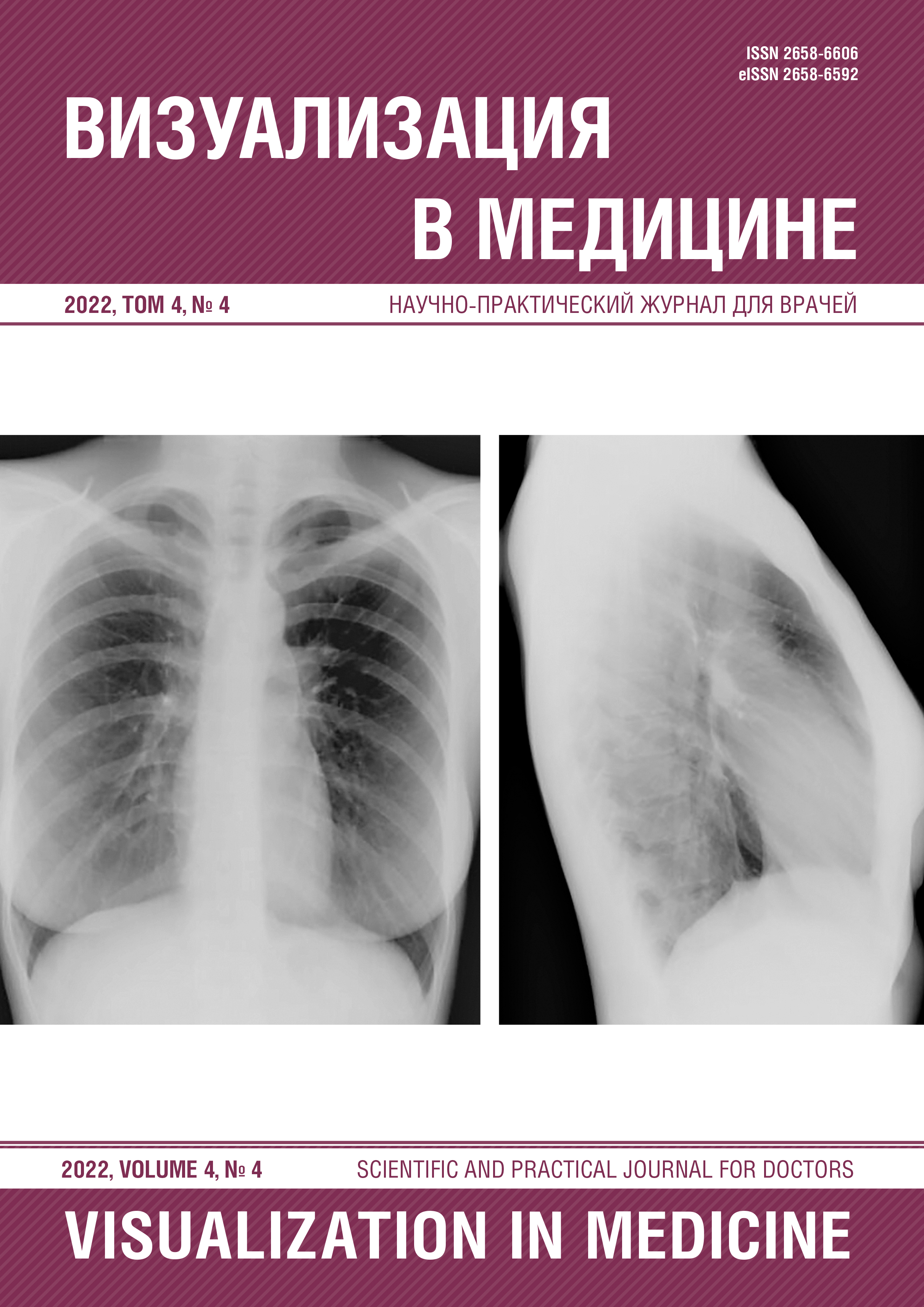PROSPECTS FOR THE USE OF ARTIFICIAL INTELLIGENCE IN RADIOLOGY. A BRIEF OVERVIEW
Abstract
Purpose of the study. Analysis of promising areas for the use of artificial intelligence in radiology. Materials and methods. The materials for the study were articles and reviews published in the international databases PubMed, Scopus, as well as RSCI. The methods of scientific hypothetical-deductive cognition, general logical methods and methods of research are applied: analysis, synthesis, abstraction, induction. Results. In the course of the analysis of the literature data, it was revealed that artificial intelligence is most widely used in radiation diagnostics for the detection of lung, colon, breast and prostate cancer. In the last decade, there has been a rapid growth of research using artificial intelligence to interpret images, which cover the identification and classification of diseases, segmentation of organs and lesions (determining the boundaries of an organ or lesion) and evaluation of the response to treatment. Findings. Currently, artificial intelligence has huge potential. Many researchers are convinced that AI in general and deep learning in particular can help solve many repetitive tasks using digital pathology thanks to recent advances in image recognition. It is necessary to integrate artificial intelligence as much as possible into the daily work of a doctor in order to ensure maximum clinical benefit for patients from new developments. Despite significant advances in the use of artificial intelligence in the analysis of images in real clinical conditions, a number of problems have been identified, which currently remains to be solved



